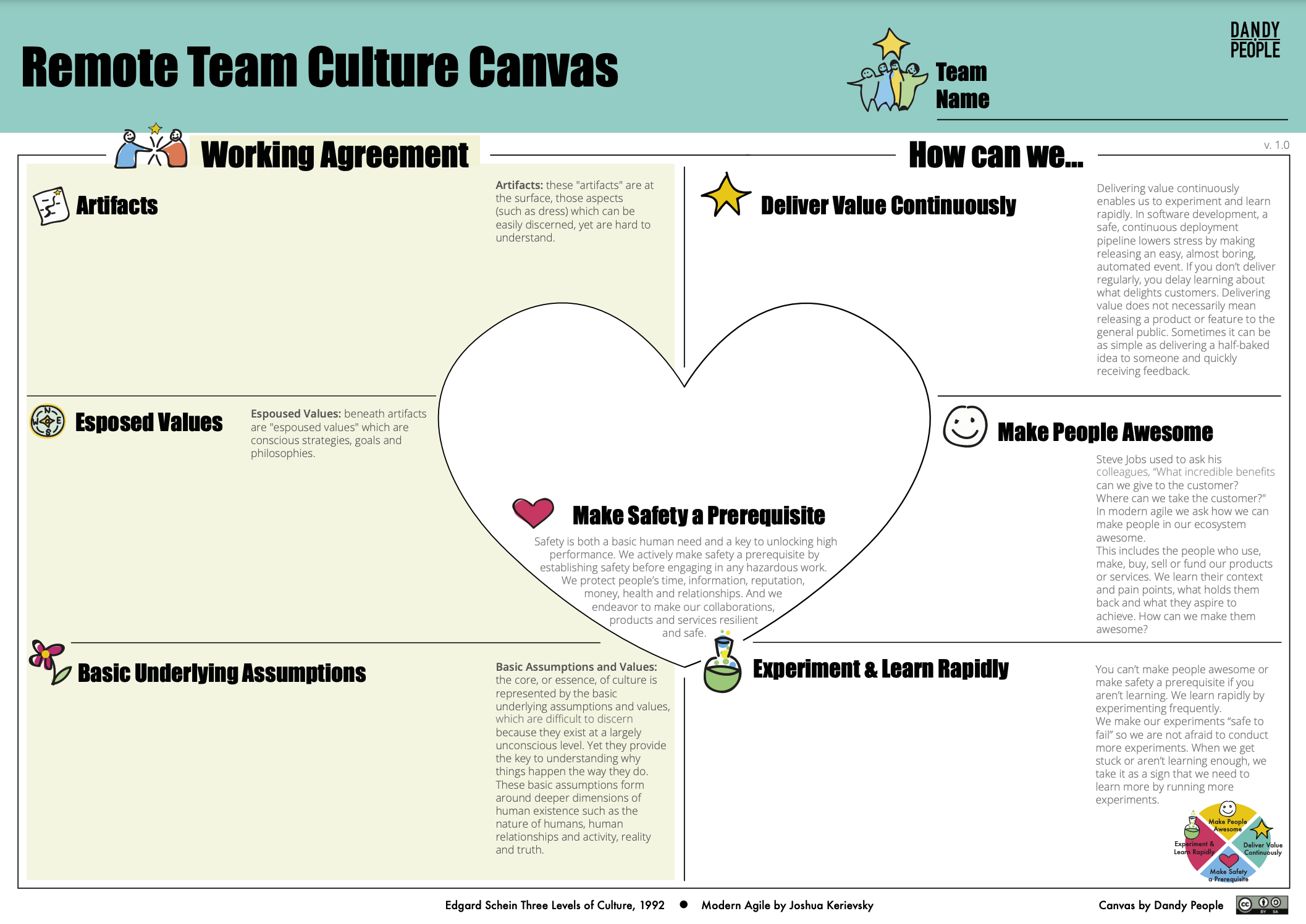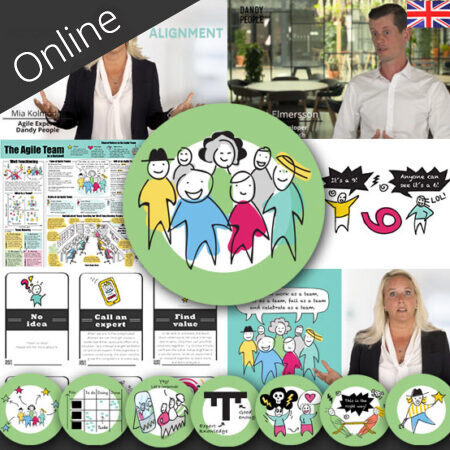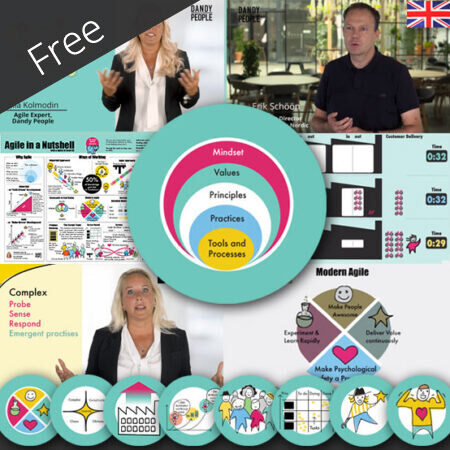Collaboration, innovation, and high performance rarely come from teams that haven’t had the time or the chance to get to know each other, build a strong foundation of common values, and a psychologically safe environment.
No matter if it is a development team, a leadership team, or an operation team, as humans we all need to go through this process to make the magic happen. And when the team works remotely, this is even more important and it can take even longer.
The “Remote Team Culture Canvas” is a way to facilitate and speed up this process by filling up together the canvas, using it as a common ground for healthy -and fun- discussions.
Download the Team Canvas for free in high resolution (PDF) >

– This Canvas can be used as an “extension” of the original Team Canvas that you can find it here. –
Left side: Working Agreement
Artifacts
These “artifacts” are at the surface, those aspects (such as dress) which can be easily discerned, yet are hard to understand.
Espoused Values
Beneath artifacts are “espoused values” which are conscious strategies, goals, and philosophies.
Basic Underlying Assumptions
The core, or essence, of culture, is represented by the basic underlying assumptions and values, which are difficult to discern because they exist at a largely unconscious level. Yet they provide the key to understanding why things happen the way they do. These basic assumptions form around deeper dimensions of human existence such as the nature of humans, human relationships and activity, reality, and truth.
Right side: How can we…
Deliver Value Continuously
Delivering value continuously enables us to experiment and learn rapidly. In software development, a safe, continuous deployment pipeline lowers stress by making releasing an easy, almost boring, automated event. If you don’t deliver regularly, you delay learning about what delights customers. Delivering value does not necessarily mean releasing a product or feature to the general public. Sometimes it can be as simple as delivering a half-baked idea to someone and quickly receiving feedback.
Make People Awesome
Steve Jobs used to ask his colleagues, “What incredible benefits can we give to the customer? Where can we take the customer?” In modern agile, we ask how we can make people in our ecosystem awesome. This includes the people who use, make, buy, sell or fund our products or services. We learn their context and pain points, what holds them back and what they aspire to achieve. How can we make them awesome?
Experiment & Learn Rapidly
You can’t make people awesome or make safety a prerequisite if you aren’t learning. We learn rapidly by experimenting frequently. We make our experiments “safe to fail” so we are not afraid to conduct more experiments. When we get stuck or aren’t learning enough, we take it as a sign that we need to learn more by running more
experiments.
Make Safety a Prerequisite
Safety is both a basic human need and a key to unlocking high performance. We actively make safety a prerequisite by establishing safety before engaging in any hazardous work. We protect people’s time, information, reputation,
money, health, and relationships. And we endeavor to make our collaborations, products, and services resilient and safe.
Read more about Modern Agile here



